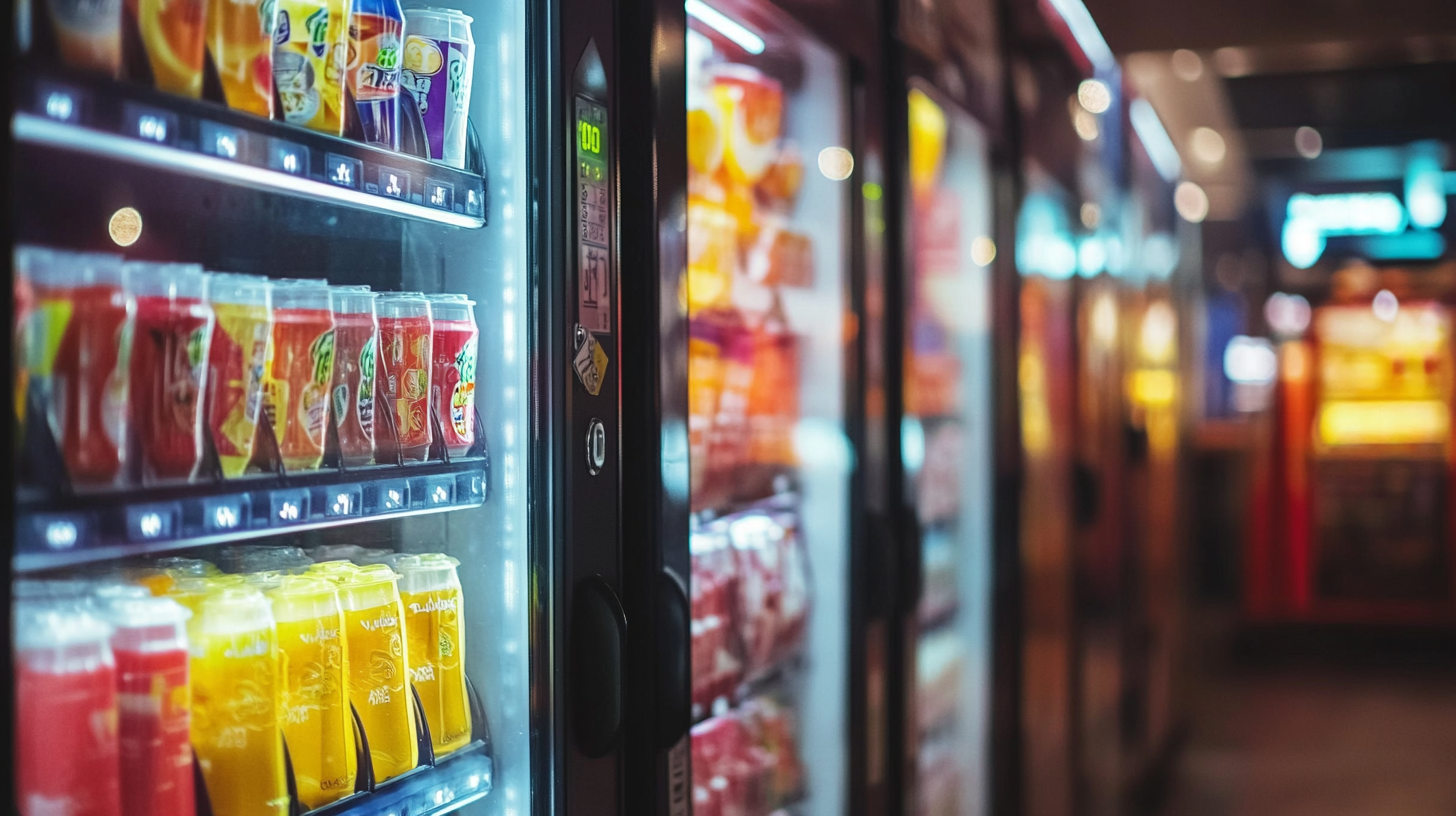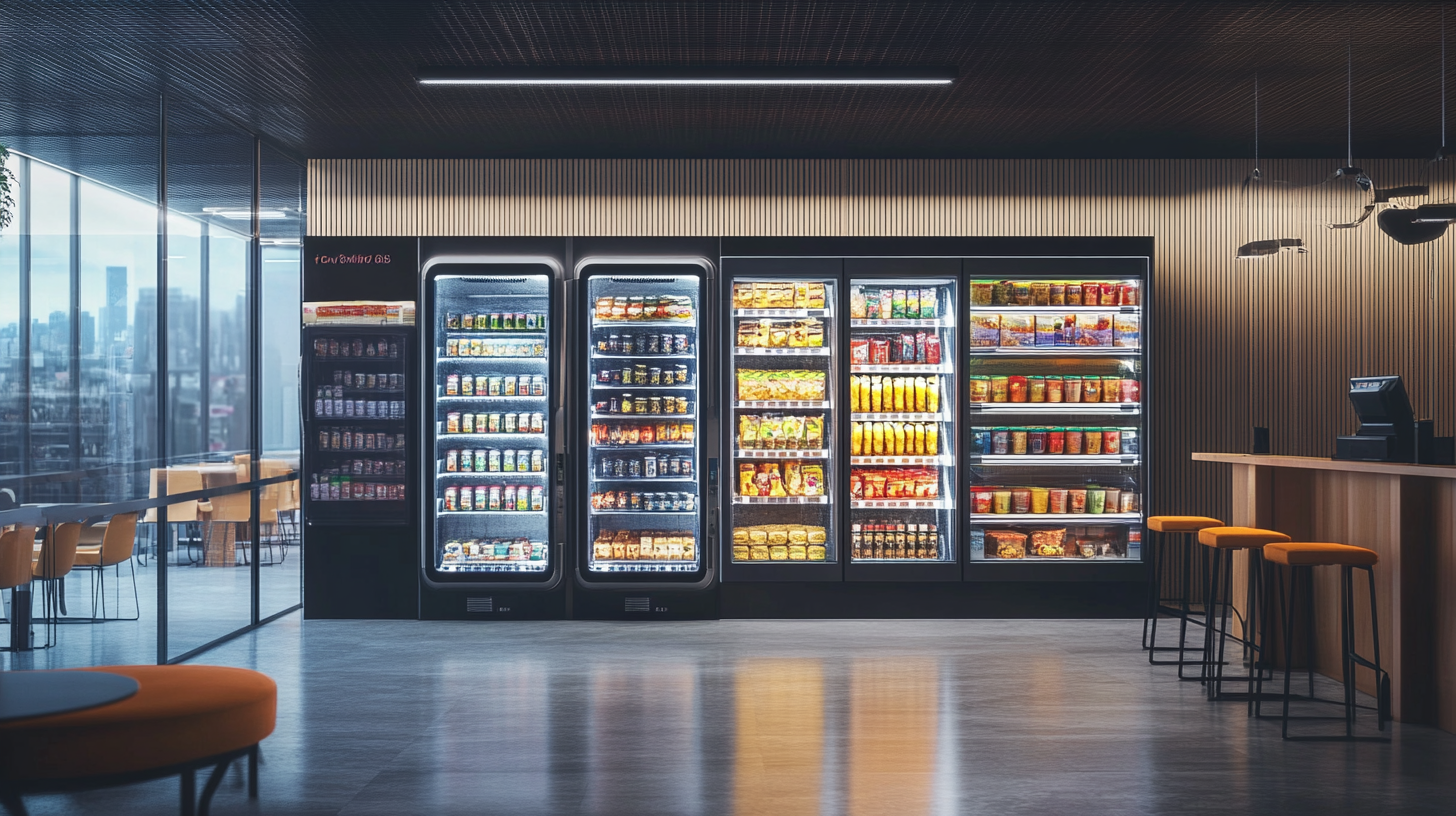Unlocking Global Market Trends in Vending Products for Savvy Buyers
In recent years, the vending products industry has experienced a remarkable transformation, positioning itself as a vital component of the global retail landscape. According to a report by IBISWorld, the global vending machine industry is projected to grow at a CAGR of 4.4%, reaching an impressive market size of $25 billion by 2026. This growth reflects a rising demand for convenience and automation in shopping, as consumers increasingly seek quick and accessible purchasing options. Smart vending machines offering a range of products from snacks to electronics are transforming how businesses engage with customers, making it essential for savvy buyers to stay informed about emerging trends.
As consumer preferences evolve, the market for vending products is becoming more dynamic, influenced by technological advancements and changing shopping behaviors. A study from Statista indicates that nearly 50% of consumers are interested in purchasing health-oriented products from vending machines, showcasing a shift towards healthier options. This trend highlights the importance of adapting to consumer demands and leveraging data analytics for inventory management and sales forecasting. For smart buyers, understanding these global market trends in vending products is crucial to making informed purchasing decisions and capitalizing on the opportunities presented in this burgeoning industry.

Exploring the Global Vending Machine Market Growth Projections for 2025
The global vending machine market is poised for significant expansion, driven by the increasing demand for convenient and innovative products. As the intelligent vending machine market continues to evolve, projections indicate considerable growth, with the market size anticipated to surge from $11.47 billion in 2025 to an impressive $36.89 billion by 2032. This remarkable growth showcases a compound annual growth rate (CAGR) of 18.2%, emphasizing the potential for savvy buyers to tap into lucrative opportunities within this sector. Innovative technologies, such as artificial intelligence and cashless payment systems, are transforming traditional vending experiences, making them more accessible and appealing to customers. These advancements not only optimize operational efficiency but also enhance the consumer experience by offering personalized product selections. Additionally, the rise of health-conscious consumers is driving the vending industry to diversify offerings, leading to a notable increase in the availability of healthy snacks and beverages. Moreover, urbanization and a shifting lifestyle towards on-the-go consumption further catalyze the growth of the vending machine market. With consumers increasingly seeking convenience, the deployment of intelligent vending machines in high-traffic areas presents a strategic advantage. As companies adapt to these evolving consumer preferences, the market's potential for revenue generation and innovation remains vast. The future appears promising, beckoning wise investors to explore this burgeoning landscape meticulously.

Key Consumer Trends Shaping the Vending Product Landscape in 2023
In 2023, the vending product landscape is being significantly shaped by key consumer trends that reflect broader shifts in the global market. As the consumer-packaged goods (CPG) industry grapples with economic pressures and changing consumer preferences, savvy buyers must stay ahead of these trends to make informed purchasing decisions. Reports indicate that the Asia retail vending machine market was valued at USD 38.60 billion in 2022 and is projected to grow at a compound annual growth rate (CAGR) of 4.2% from 2023 to 2030, highlighting the robust demand for vending products in the region.
One of the primary consumer trends influencing the vending industry is the increasing preference for healthier options. Today's consumers are more health-conscious than ever, leading to a notable shift in the types of products available in vending machines. This has propelled vending operators to diversify their offerings, incorporating organic snacks, low-calorie beverages, and functional food items that cater to wellness-oriented consumers. Furthermore, technological advancements such as cashless payment systems and smart vending machines are enhancing the consumer experience, making it easier and more convenient for buyers to make choices that align with their health goals.
Additionally, sustainability is becoming a critical focus for consumers, prompting vending companies to rethink their product sourcing and packaging solutions. Eco-friendly products and recycling initiatives are now at the forefront, as buyers seek brands that reflect their values. This trend is particularly pronounced in the CPG industry, where transparent supply chains and environmentally responsible practices are becoming key purchasing factors. As the market evolves, understanding these consumer-driven dynamics will be essential for anyone engaged in the vending industry, ensuring they meet the demands of a rapidly changing landscape.

The Impact of Technology on Vending Solutions: Innovations and Statistics
In the rapidly evolving landscape of vending products, the integration of technology has revolutionized the way consumers interact with these automated retail solutions. Innovations in payment systems, particularly in the realm of financial technology, have led to more seamless transactions and an enhanced user experience. As industry leaders continue to develop smart payment solutions, the use of internet connectivity and real-time data analytics is becoming increasingly prevalent, allowing businesses to tailor their offerings to meet the dynamic preferences of consumers.
Recent forums on financial payment ecosystems highlight the growing importance of innovation in payment mechanisms, particularly in multi-scenario applications. These advancements are not only making transactions faster and more secure but also expanding the reach of vending products into new markets. As costs associated with traditional payment systems rise, businesses are looking for more efficient alternatives that leverage technology to streamline operations, which is critical in a competitive global market.
Moreover, global trade dynamics are reshaping the competitive landscape for vending products. With varying tariffs and regulatory environments impacting international brands, companies must adapt their strategies to thrive. The ability to harness data and insights from technology enables savvy buyers to navigate these complexities effectively, aligning their product offerings with shifting market demands while ensuring a sustainable competitive edge. As the vending industry moves forward, the intersection of technology and market trends will be crucial for success.

Analyzing Regional Variations in Vending Product Demand Across Key Markets
The vending product market is witnessing dynamic shifts, influenced by regional preferences and trends. In the realm of beverages, for instance, the global decaffeinated coffee market is projected to reach a valuation of $15 billion in 2024 and grow to $22 billion by 2032, with a compound annual growth rate (CAGR) of 4.8%. This trend highlights the increasing demand for healthier choices among consumers, reflecting a broader shift in dietary preferences that is transforming vending machine offerings.
China’s beverage sector exemplifies rapid expansion, having experienced a significant turning point in 2016. The compound annual growth rate for the soft drink market from 1997 to 2022 stood at an impressive 10.83%, underscoring the country's robust consumption patterns. As this market continues to evolve, savvy buyers in the vending space can capitalize on emerging opportunities, especially with health-focused products and innovative flavors appealing to a diverse consumer base.
Meanwhile, Japan's bottled water market is also poised for growth, expected to increase from a valuation of $4.45 billion in 2022 to $7.71 billion by 2032, driven by a CAGR of 5.6%. This rising demand emphasizes the importance of regional variations in consumer preferences. For vending machine operators, this means strategically aligning their product selections with local tastes and trends to maximize market penetration and profitability across various territories. By staying attuned to these regional dynamics, stakeholders can unlock the potential within global vending markets.
Sustainability in Vending: Consumer Preferences and Market Data Insights
Sustainability is becoming a vital consideration for consumers when it comes to purchasing vending products. As awareness of environmental issues grows, shoppers are increasingly favoring brands that demonstrate a commitment to sustainable practices. Data indicates that consumers are more likely to choose items that feature eco-friendly packaging or that are sourced from sustainable materials. This shift in preferences presents both challenges and opportunities for vending product manufacturers and operators.
Recent market data insights reveal that implementing sustainable practices can enhance brand loyalty and attract a broader customer base. Consumers express a willingness to pay a premium for products that align with their ethical values, particularly those emphasizing waste reduction and the use of recyclable materials. Furthermore, vending operators who curate their selections based on sustainability criteria can differentiate themselves in a crowded market. This trend not only benefits the environment but also positions savvy buyers to capitalize on growing consumer demand for responsible products.
In response to these trends, manufacturers are increasingly innovating to create sustainable vending solutions. This includes developing machines that utilize energy-efficient technology and offering incentives for recycling or refilling containers. Buyers are encouraged to stay ahead of the curve by embracing these sustainability trends, as they can enhance their product offerings while contributing positively to the environment. With sustainability now at the forefront of consumer preference, the vending industry is poised for transformation driven by eco-conscious choices.

